7 handy ways to reuse plastic containers at home – stop waste, save money, and ease clutter
Experts share top ways to repurpose them


We're big advocates for recycling products, and reusing plastic containers is high on our list, as many can end up in the landfill otherwise.
Whether it was once used for holding food, products, or it came from a store, there's always something you can do with it once it's washed out and dry.
We all have containers put aside 'in case they're useful', so here's your call to get them out and give them a fabulous new use.
Our experts below give some really great ideas to get an extra use from your containers – from reusing plastic bottles in the garden to organizing your pantry, there's an idea for everyone.
1. Feed the birds
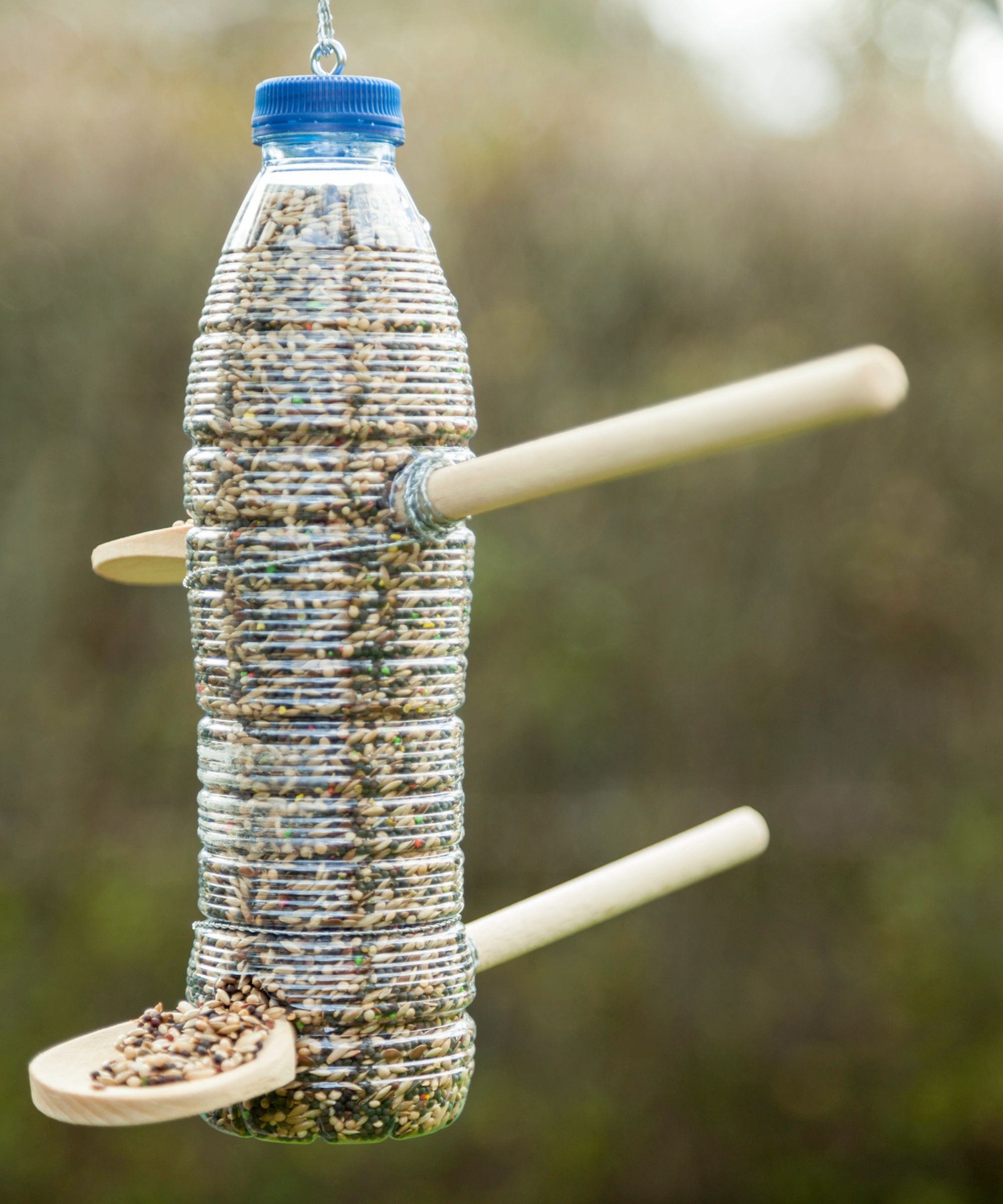
DIY your own bird feeder with a water bottle and wooden spoons
This is a really good idea and one we particularly love – we should all learn how to create a natural bird feeder for our feathered friends.
'Winter can be harsh on wildlife, so turning a plastic container into a bird feeder is a simple way to give back as the weather begins to turn,' says Michael Bowman, CMO and design expert at Patio Productions.
'I’d love to see a designed-to-reuse feeder kit, where different plastic containers (yogurt cups, takeout boxes, etc.) could fit into a sleek, weatherproof frame, blending seamlessly with modern backyard decor,' he adds.
Design expertise in your inbox – from inspiring decorating ideas and beautiful celebrity homes to practical gardening advice and shopping round-ups.
We're going to give the idea in the image above a go. All you need is a used water bottle and lid, a couple of wooden spoons, and some bird seed.
Amazon's Morgles 5 pack of wooden spoons are a good buy, and they're 12 inches long. The best place to get quality bird seed from is Walmart, the Pennington classic wild bird feed has the highest ratings and contains wholesome grains that attract most bird varieties such as cardinals and finches.
You can store the seeds in this charming metal canister below to stop any pests getting into it.
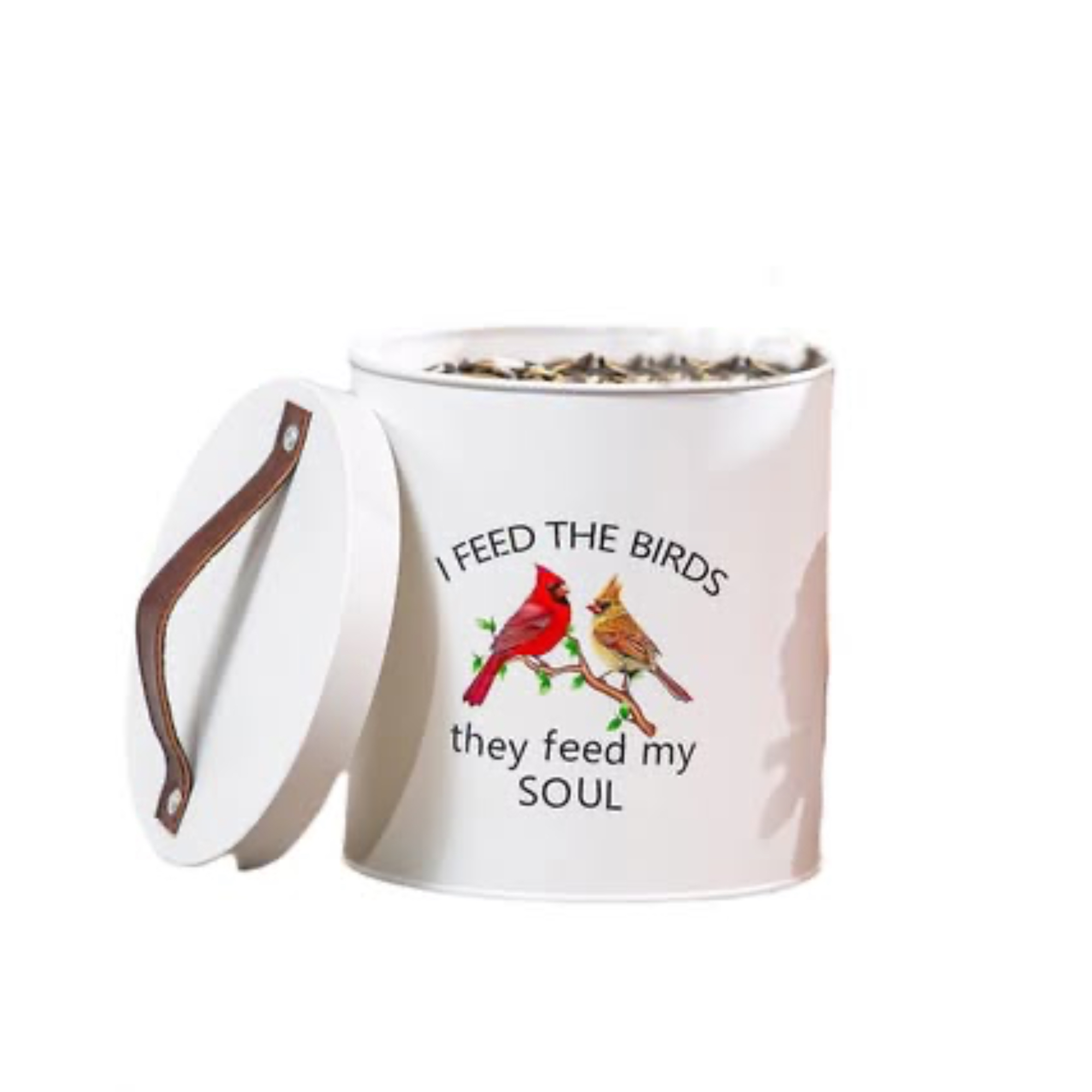
This charming metal canister is designed specially for your bird seed. It comes complete with a sturdy leather handle on the lid and a handy scoop for transferring it into your feeder. There are two designs to choose from, Cardinal is shown, or Bluebird.
2. Create a First Aid kit
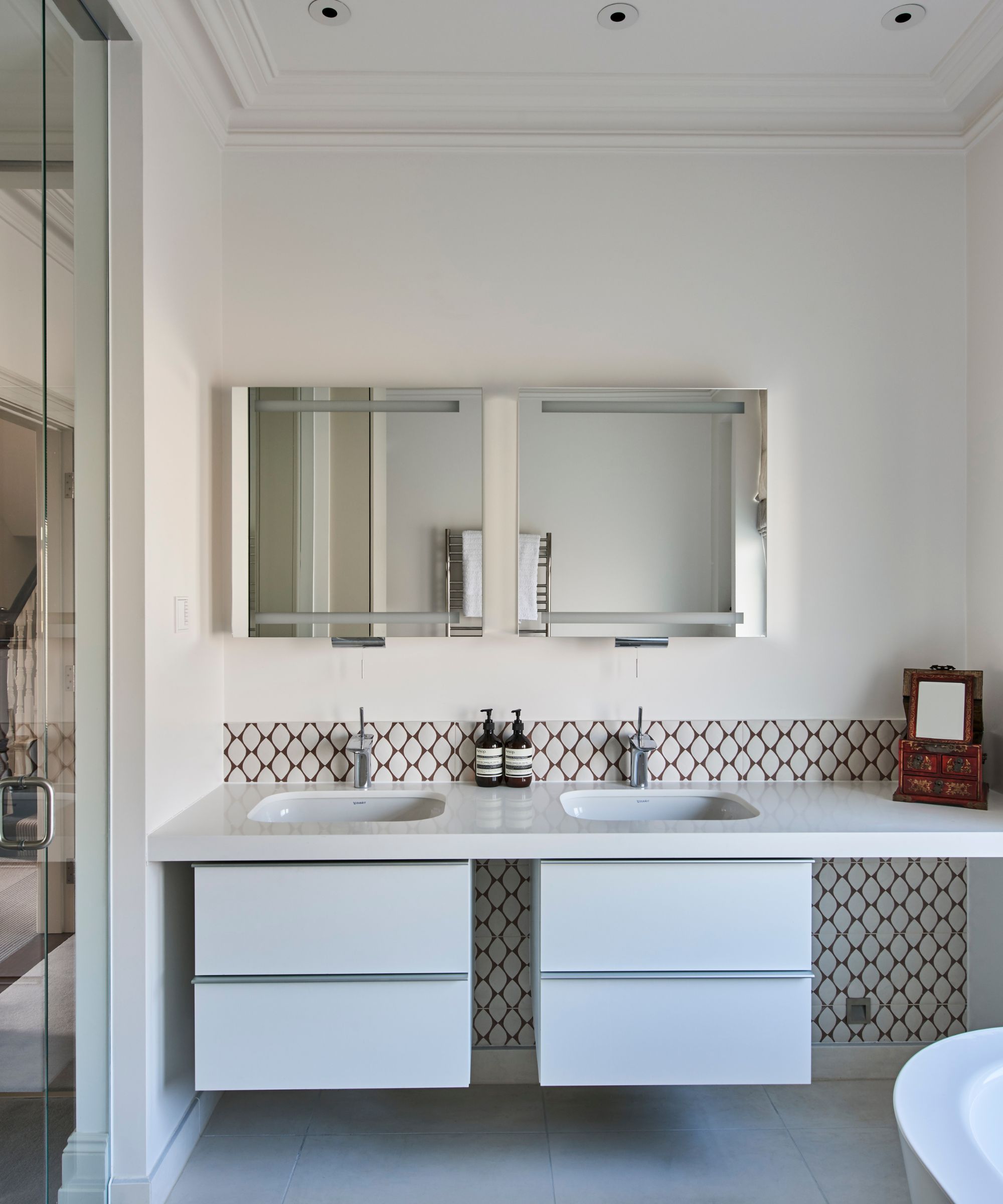
A first aid kit is very handy to have in the house. Keep it somewhere easy to access and memorable so you don't end up racing around trying to find it when you need it.
Shaunach Talley, head of product and innovation at Betterware U.S recommends creating your own First Aid kit.
'Accident-prone? Create a first aid kit with band-aids, ointment, tape and gauze. The possibilities are endless, and it stores perfectly in drawers or cabinets to simplify life.'
This is particularly good for a container that has a lid – perhaps a plastic take-out container.
You can also create multiple small first aid kits using your old plastic containers and have them in key areas where injuries might occur: Think in the shed for gardening woes, in the garage for DIY projects, or in bathrooms where wounds will be cleaned.
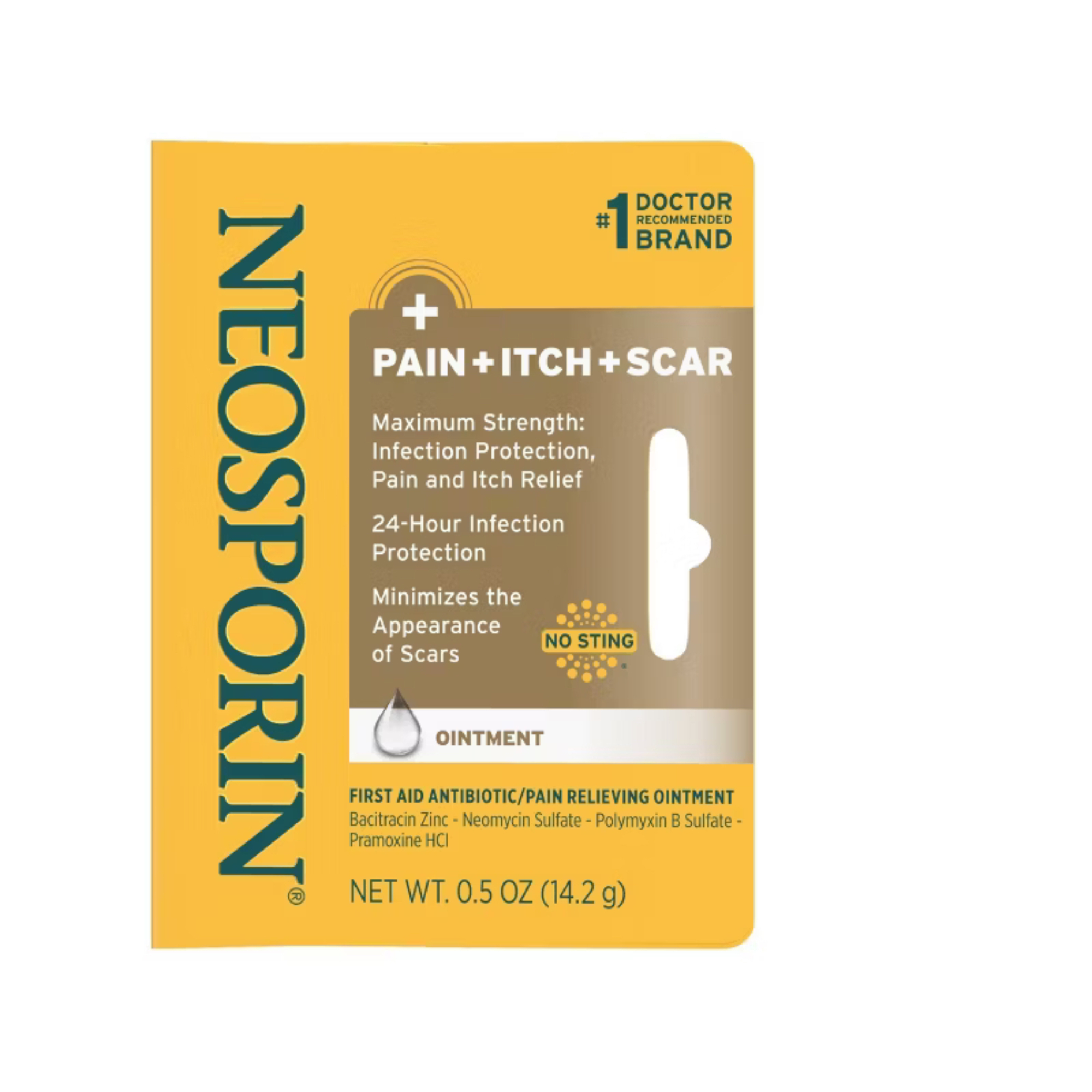
This is a great ointment to have in your kit, it provides 24-hour infection protection and maximum strength itch and pain relief. Use on minor cuts, scrapes, burns and wounds. Apply a small amount and cover with a bandage, it's also great for preventing scarring.
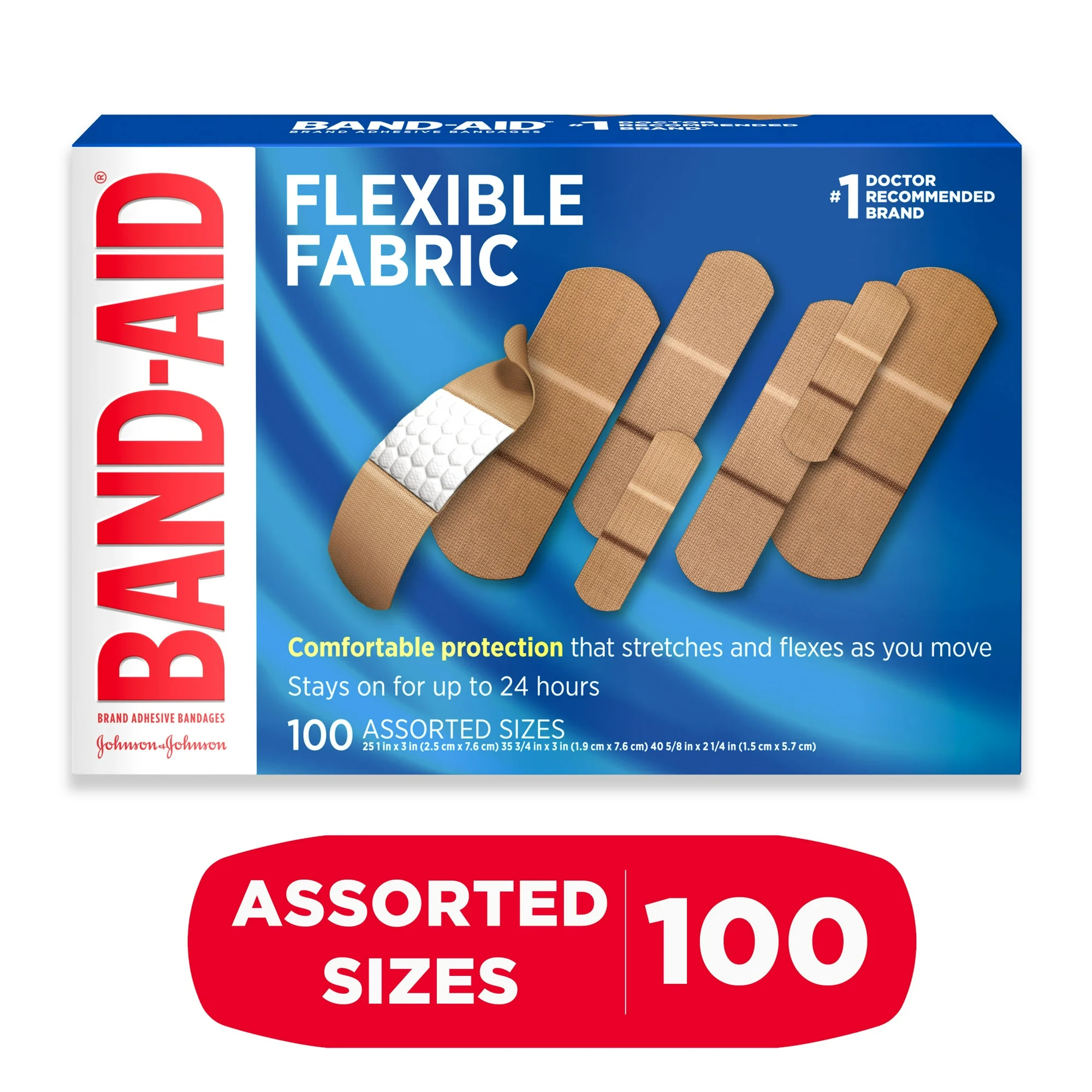
It's always good to have a variety of fabric adhesive bandages in your kit. These will stay on for 24 hours and help to protect the wound from dirt and germs, and are sterile. Use the Neosporin first, then add the bandage.
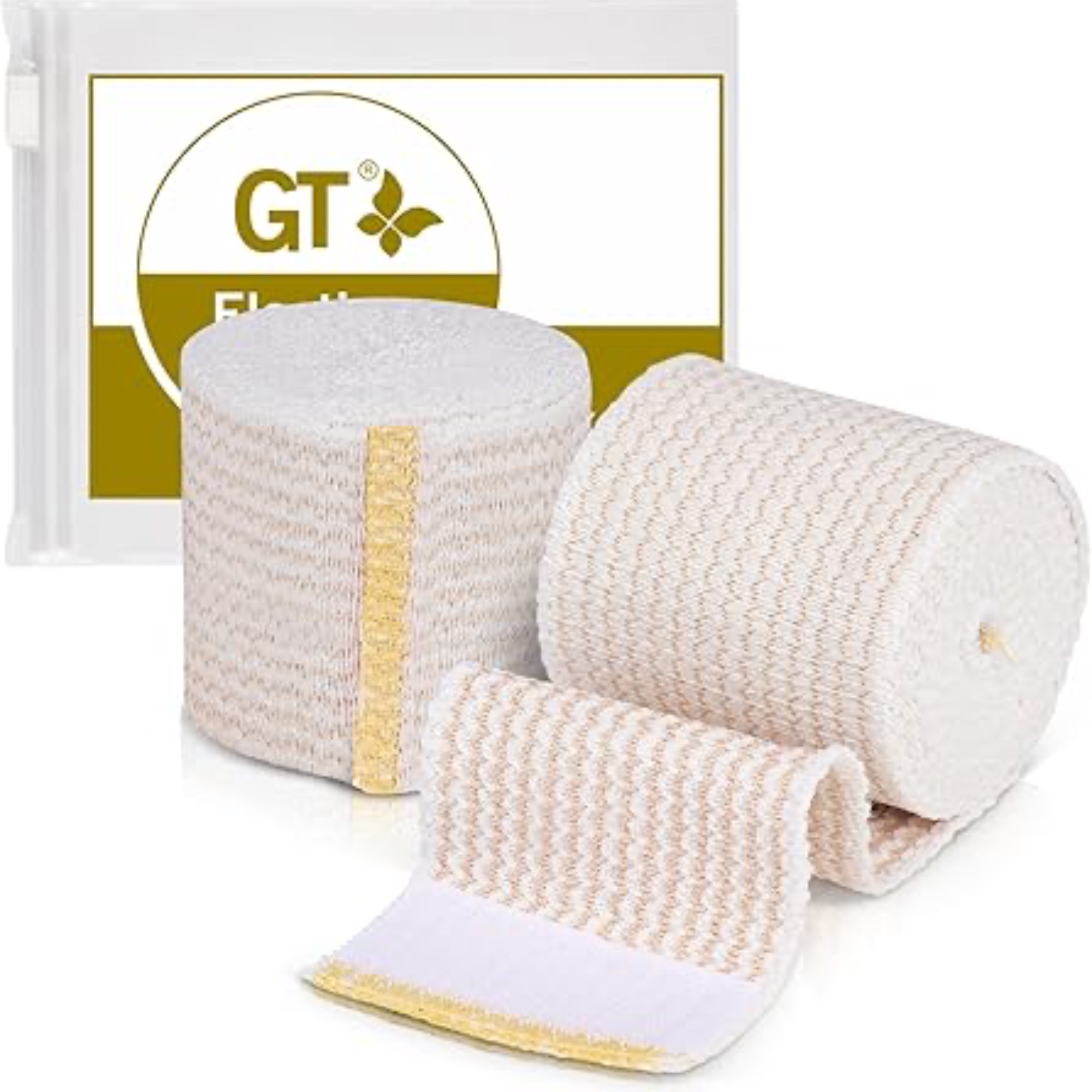
For sprains and knocks, it's always worth having an elastic bandage wrap in your kit. This makes has hook and look fasteners at each end and is ideal for the waist, legs, elbows, and knees. They are latex-free, hypoallergenic, and can be washed in the machine.
3. Pantry and kitchen organization

Keep your pantry organized with wall hung storage on the doors and open shelving inside
Pantry storage ideas can be expensive so it makes good sense to reuse lidded containers that come into your house for another purpose. you can
You can also pack leftover food for lunches or picnics, and use in the freezer too. BPA free plastic is safer so look out for symbols.
Pantry organization tricks are never to be missed either – a large non-lidded container could hold all of your sauces and dressing together, pop it on a Lazy Susan for ease of use – we love TB Home's 14" bamboo kitchen turntable from Walmart, it's rated well and spins easily according to the reviews.
Open packets of pasta can be stored in taller plastic containers as well as items like nuts and seeds to stop them from going stale, or leaving your pantry open to pests.
4. Hardware and garage items
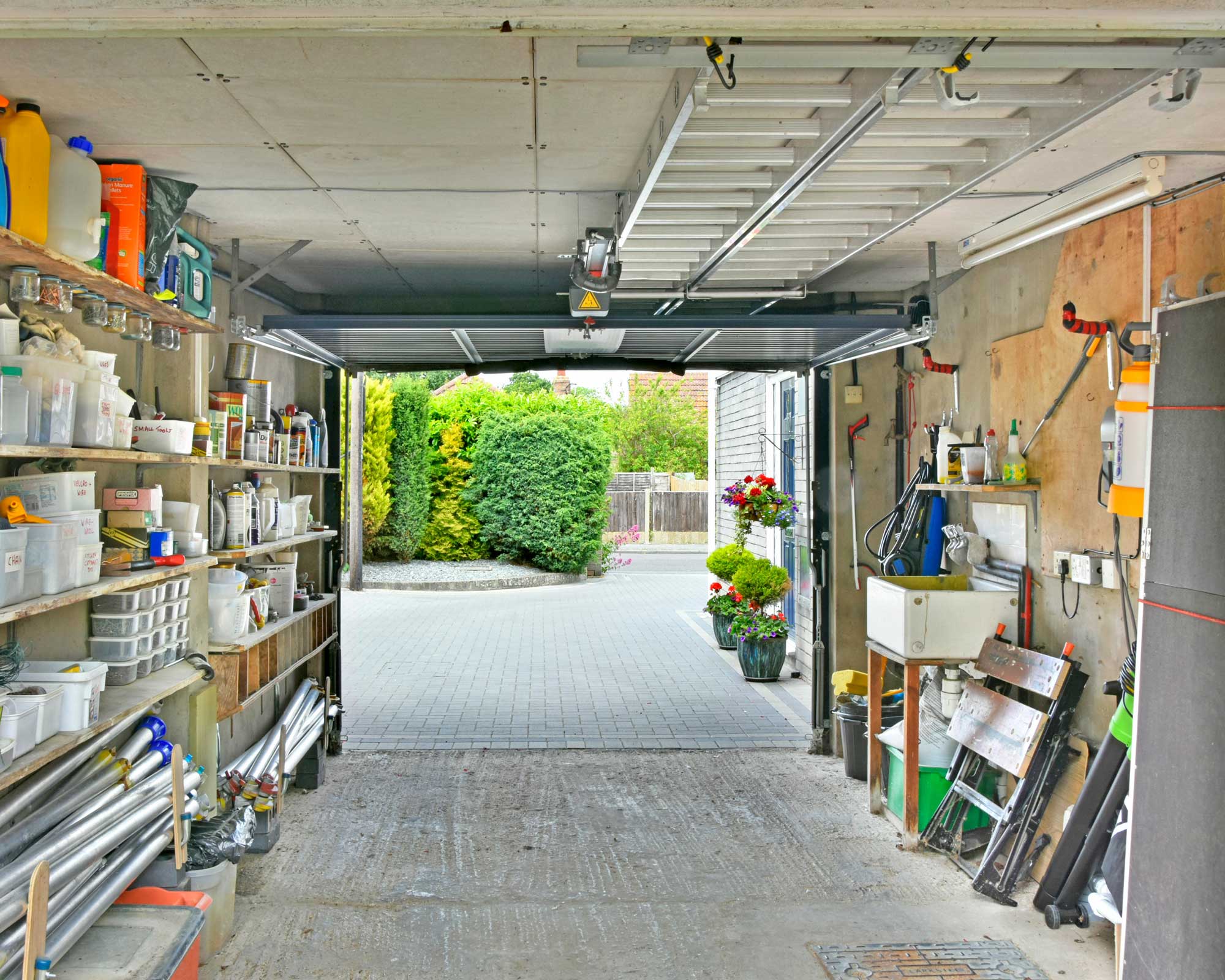
Make the most of every inch of wall space in your garage with reused plastic storage containers
According to Courtney Cummings, owner at The Stylish Organizer, if you have large plastic containers, put them to work in your garage or storage room. 'Yard and lawn care products can be grouped in containers in your garage to make spring backyard clean-ups a breeze.'
Michael seconds reusing your plastic containers to help organize a garage with too much stuff, 'I often end up with a collection of extra screws, nails, and bolts from remodeling projects.
'Rather than letting them clutter my drawers, I use plastic containers to sort and store them. But why stop there? Imagine a modular, stackable system with labeled magnetic lids that stick to a pegboard or tool wall – turning your garage or workshop into an organized dream.'
Want to give Michael's idea a try? Here are three key pieces that will help.
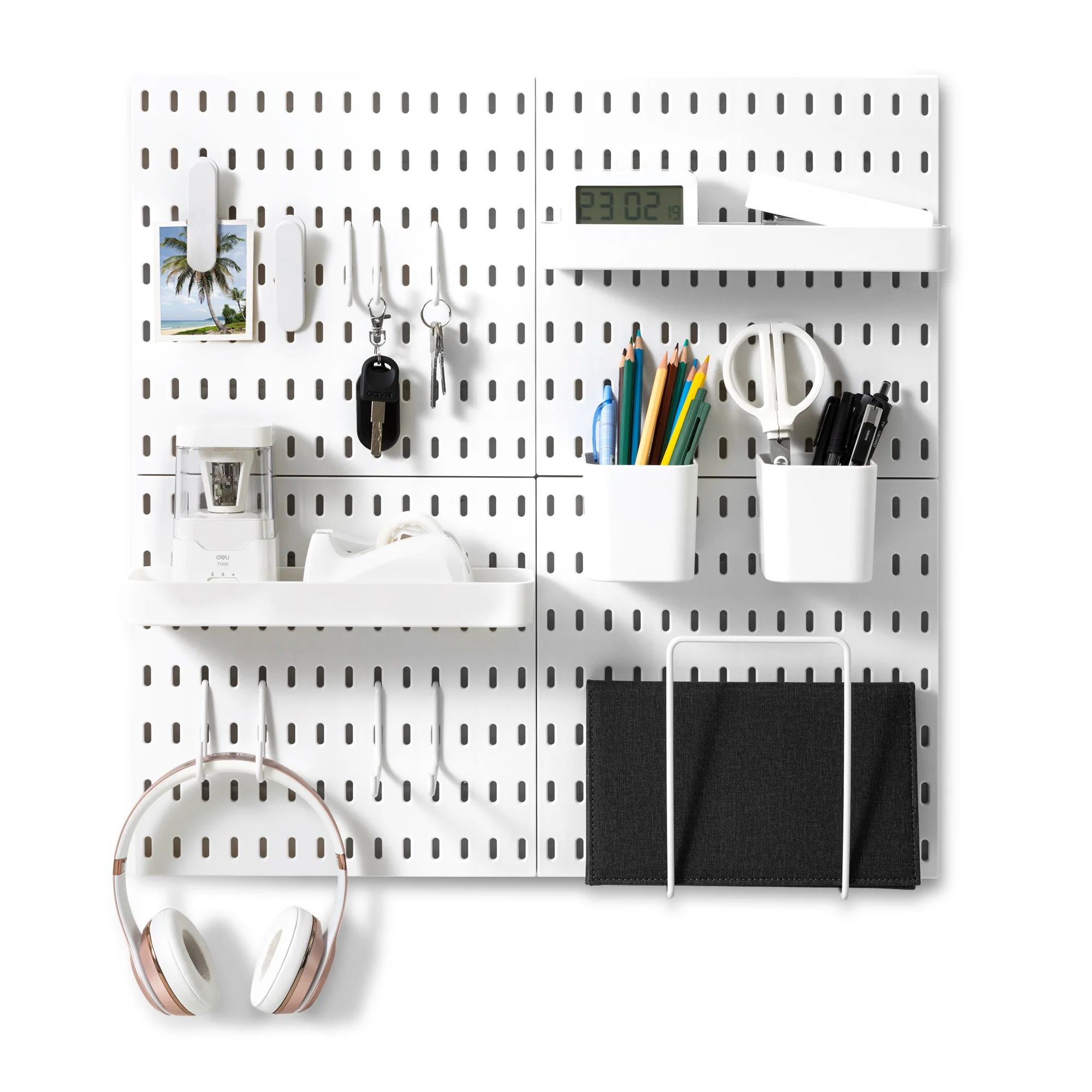
This versatile pegboard kit is easy to install – either use the self-adhesive stickers on the back or fasten with nails. It has four pegboards and 14 accessories so you can create your own layout to suit your needs and wall space. You also get containers, hooks, a letter holder and clips. Also available in black.
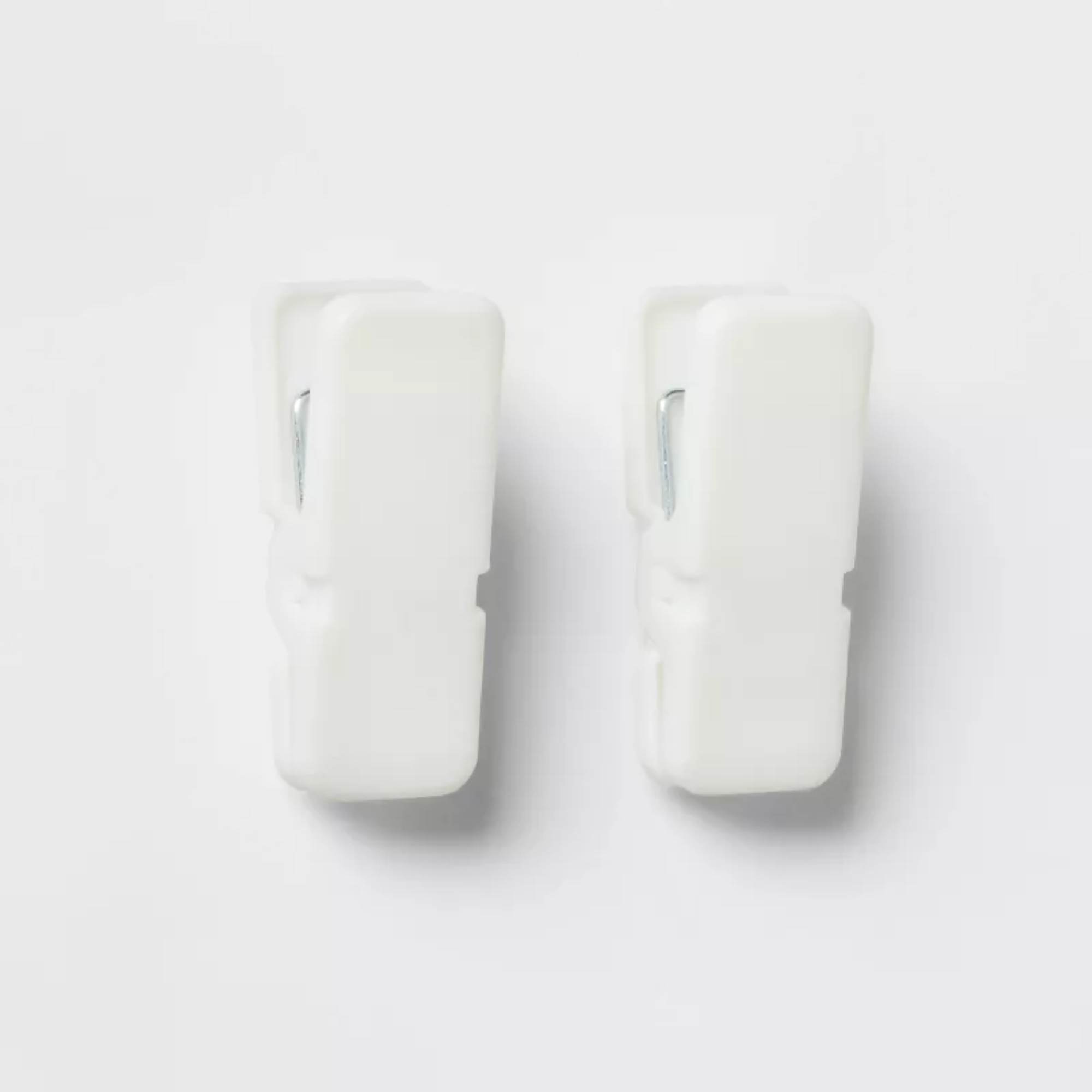
Use these handy white clips to attach your plastic containers to your pegboard. They are magnetic, so they will stick to anything as long as it's metal. Made from BPA-free plastic, they can also be used on the side of a refrigerator.
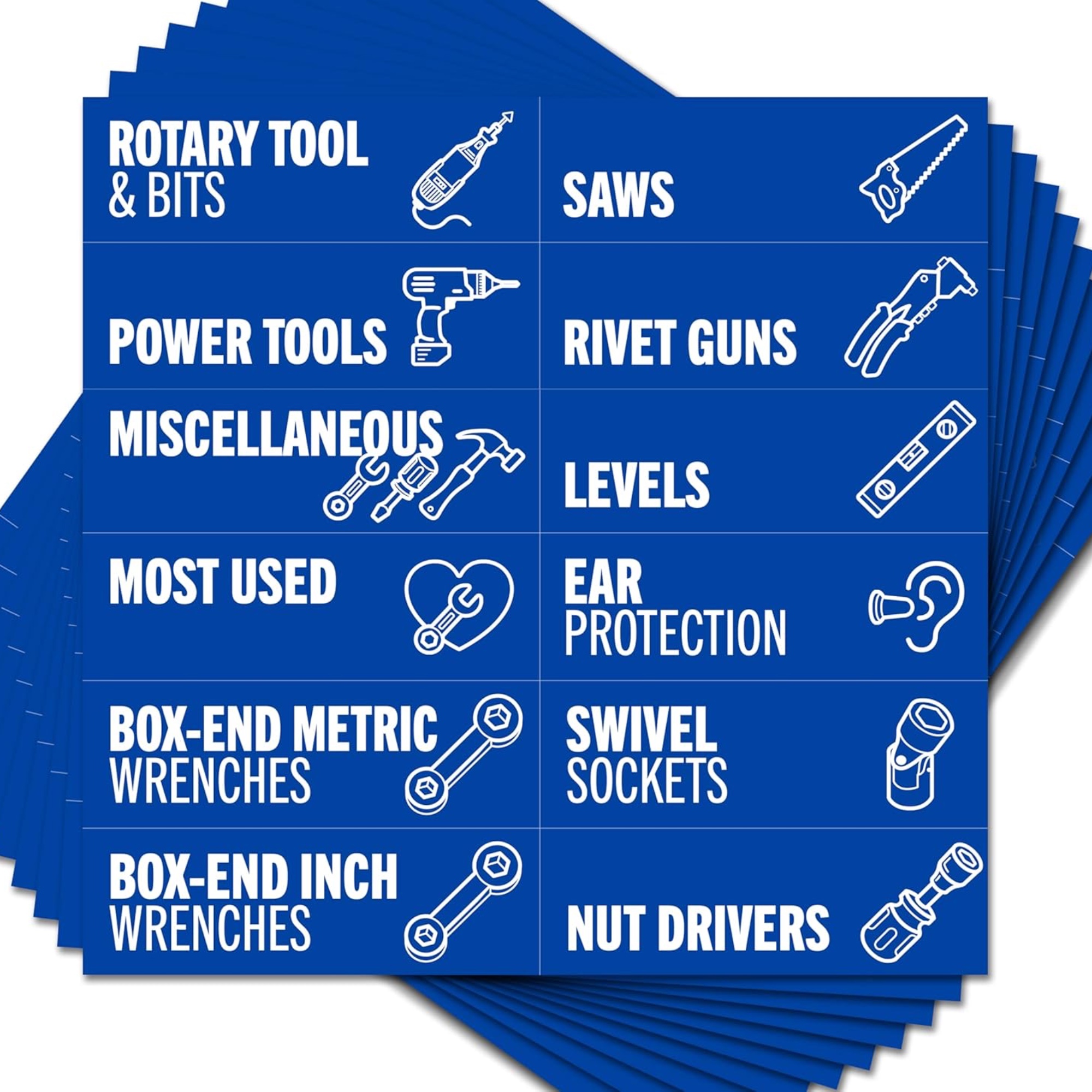
These magnetic labels are perfect for creating your own pegboard setup. Once you've got your reused plastic containers clipped on, place the relevant label above each one. They come in blue and black and cover everything from tool bits to batteries and ear protection.
5. Organize your vanity drawers
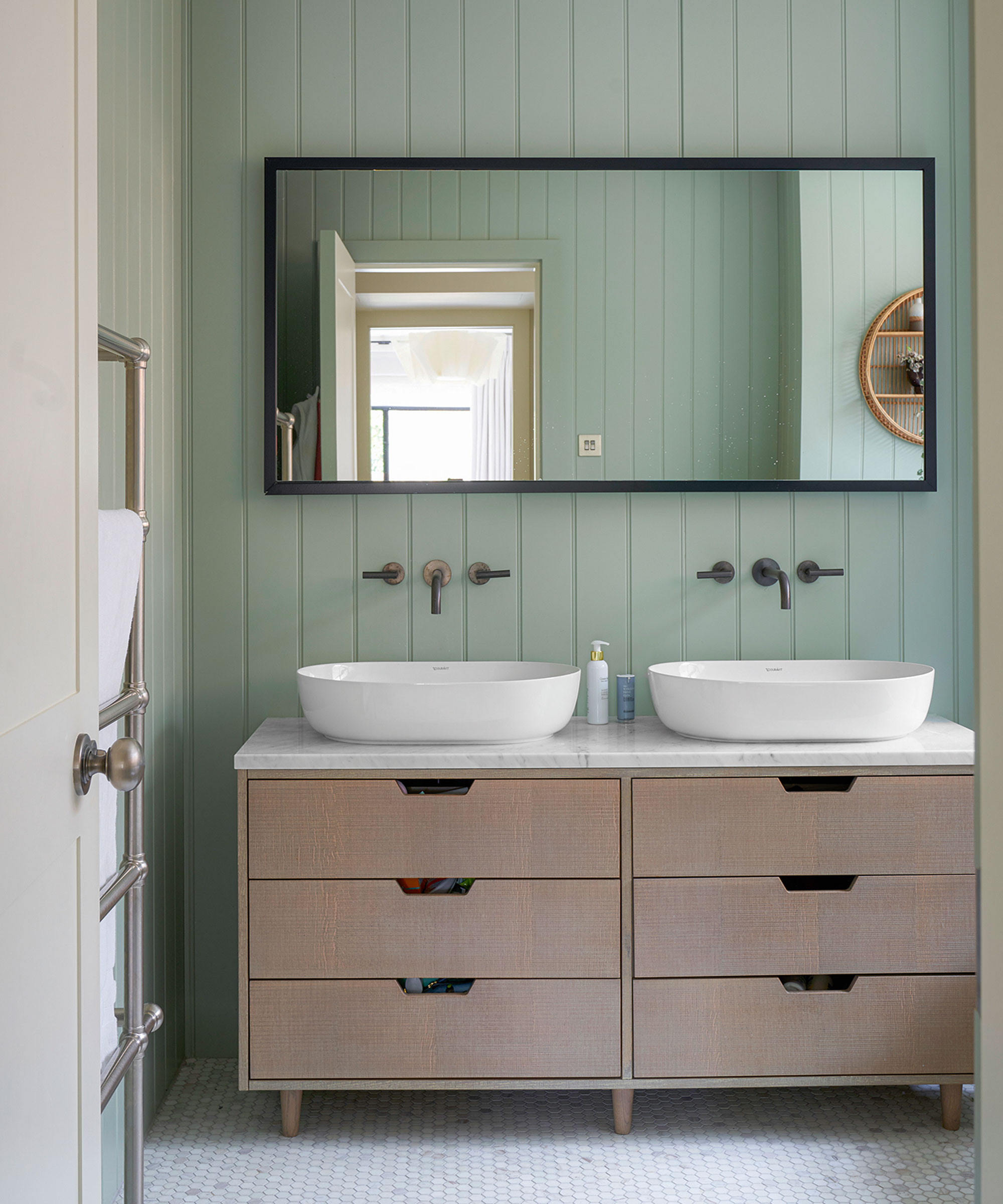
Tidy up your vanity's drawers with reused plastic containers
Hands up if your vanity drawers are a little disorganised? Courtney has the solution. She says, 'Reuse small plastic containers for your makeup, toiletries, hair accessories, and personal care products. It might be a little game of Tetris at first to make things fit in your drawers, but containing your items will go a long way to easing your morning routine.'
A vital space for many of us, learning to make the most of your vanity space is key to feeling more spacious in your bathroom.
Once you've allocated your items into your plastic containers, you can invest in this Simple Houseware 2-tier cabinet wire organizer from Amazon, that is perfect for slotting your containers into.
6. Use them for sowing seeds
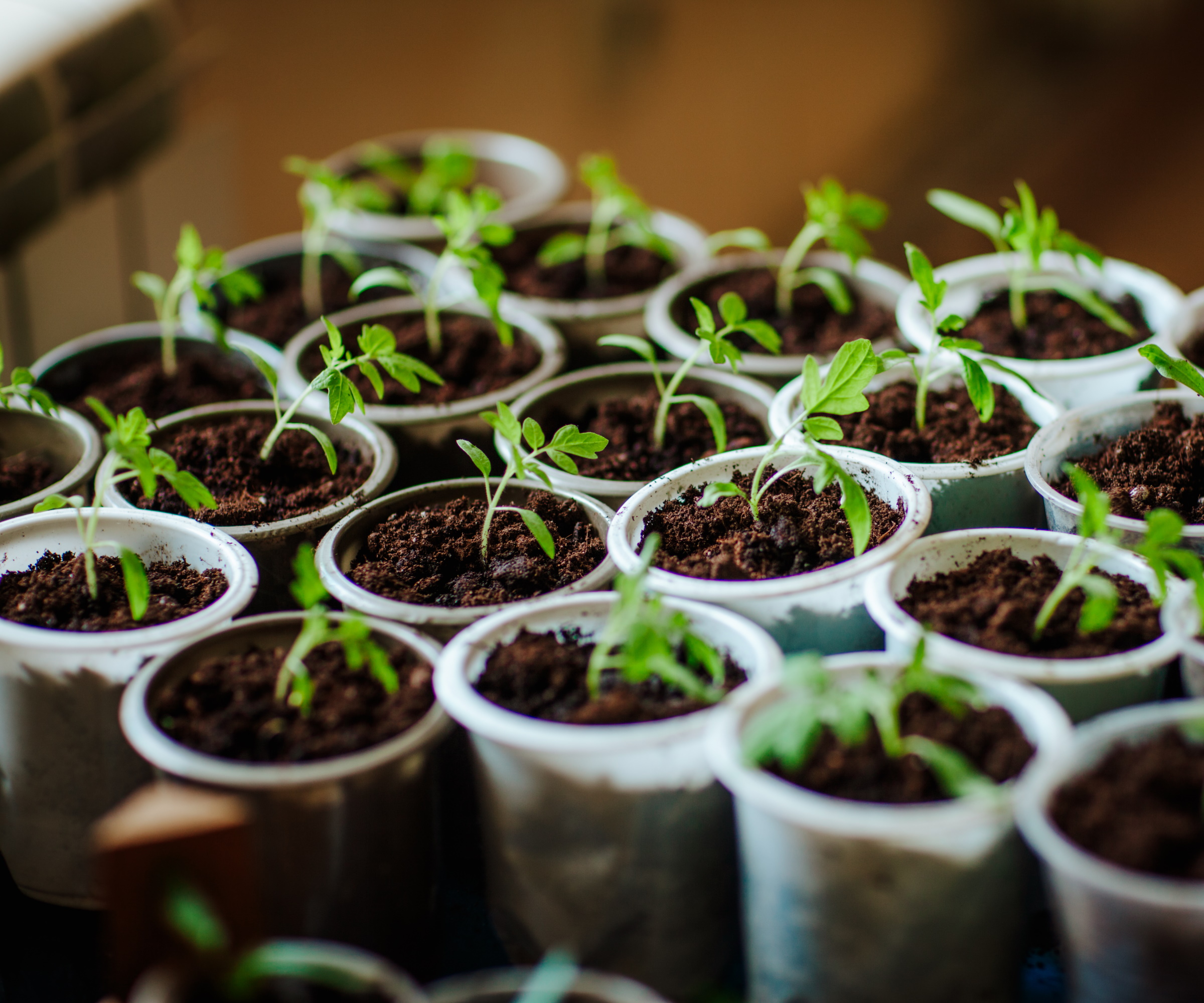
Sow your seeds into cleaned-out plastic yoghurt pots. They are the ideal size as they turn into seedlings
Wanting to learn how to sow seeds indoors? This is where you can use up your small plastic containers – yoghurt pots for example. They are the perfect size to sow your seeds in and watch them grow.
'Starting herbs or vegetables indoors is an easy way to bring a bit of green into a space. While plastic tubs work well as makeshift planters, a convertible seedling kit would be a game-changer.
'Picture an elegant, reusable outer shell that accommodates different plastic containers, giving them a uniform, stylish look on a countertop or windowsill,' says Michael.
Make sure you label what you're sowing, as it's easy to lose track sometimes.
Walmart's Ferry-Morse reusable 25 plant labels are five inches long, and you can write using a pencil if you want to use yearly, or a permanent marker if not.
7. Keep small toys in check
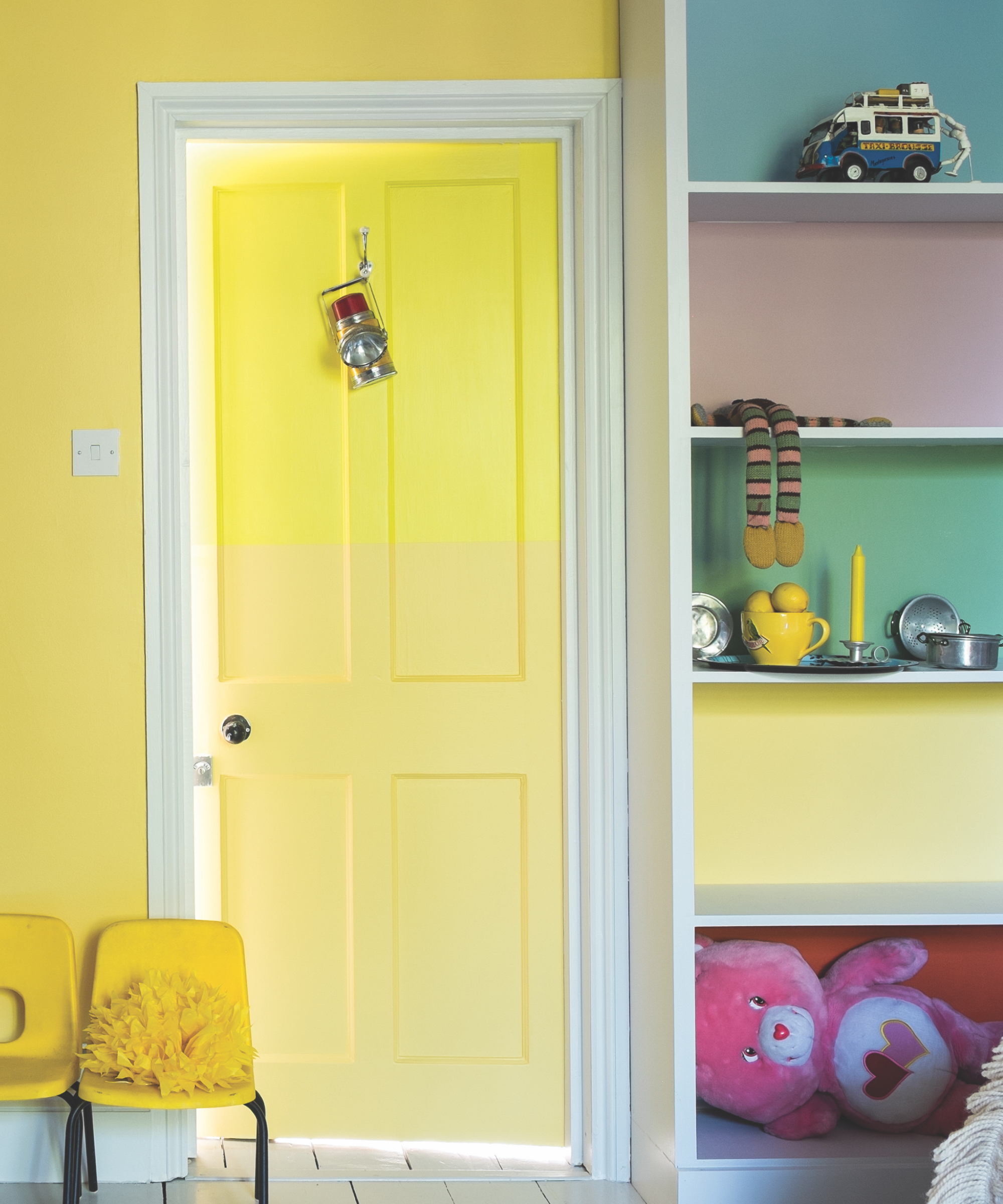
Don't know how to corral those Lego people, or need to keep a game set together now the box has fallen apart? Reuse plastic containers for this purpose
Keeping kids bedroom storage in check can be a minefield, but reusing plastic containers is one such miracle that can help, especially if you're tired of stepping on those small pieces of Lego.
Grab your plastic containers because they're spot on for this job. 'A well-loved playroom can be a nightmare to keep in order, but reusing plastic containers can help create a place for everything,' says Shaunach. And it won't break the bank.
'Finding containers that come in different sizes but still work together gives you the flexibility to maximize storage capacity and stack with ease.'
Once sorted place your containers into a larger playroom storage unit so you know where the smaller pieces are for safe keeping. We like Target's kids' toy storage organizer with nine collapsible different sized fabric storage bins in white, it's a great price and hides toys well.
Meet our experts

Michael Bowman, CMO and design expert at Patio Productions, brings creativity and strategy together to transform outdoor spaces with innovative design and smart marketing. His experience ensures he can advise all things interior and exterior.
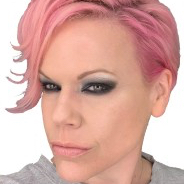
Shaunach Talley is a seasoned product development leader with over 20 years of strategic domestic and international experience. As head of product & innovation at Betterware US, she brings expertise in all things storage-related.
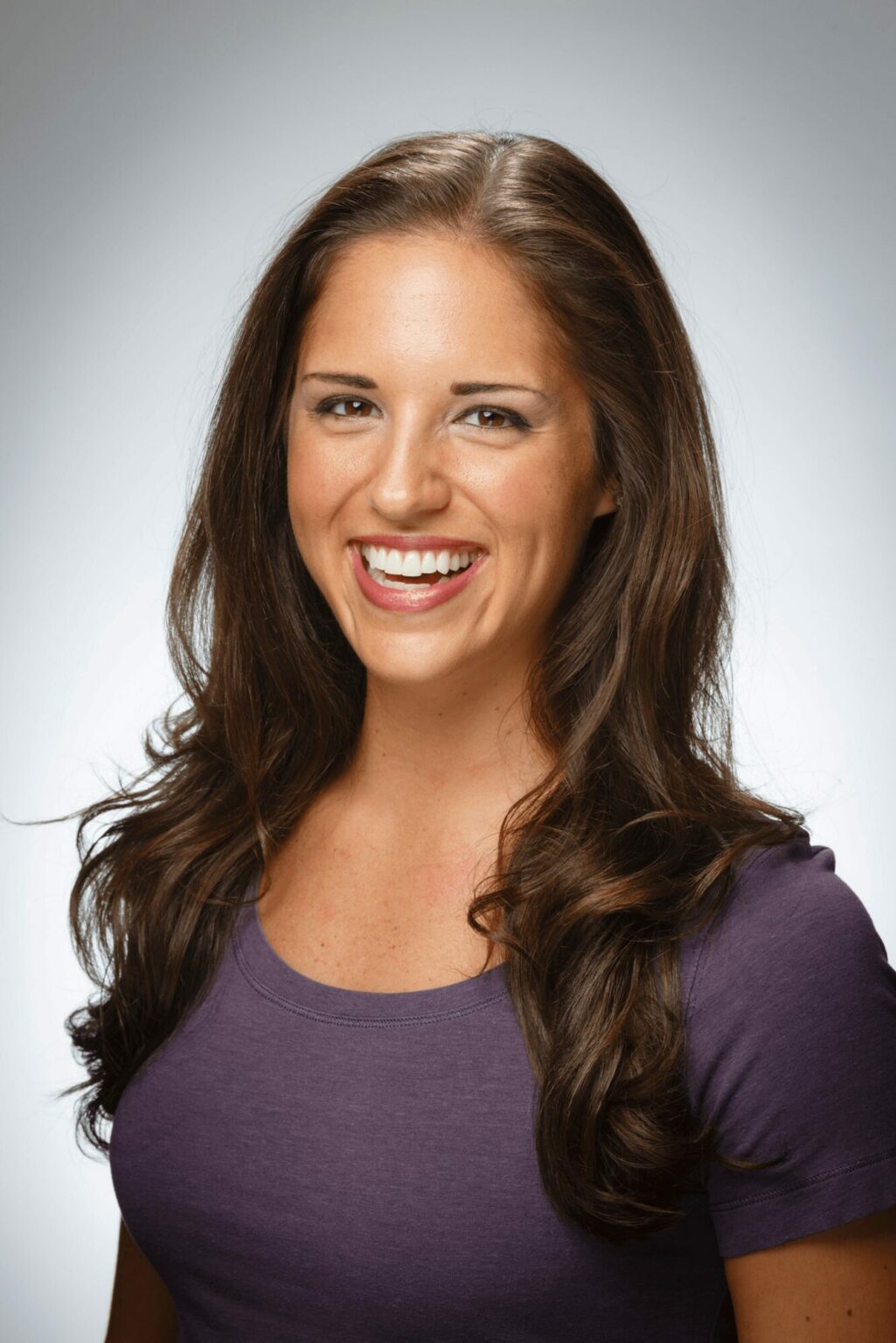
Courtney Cummings, the founder and owner of The Stylish Organizer, a professional organizing business based in Dayton, Ohio. As a busy working mom and wife, she understands the need for efficiency in a household and business environment.
With so much wasted in the world, if we all do our bit to reuse and recycle, then at least a difference is being made.
Being sustainable can be a minefield, and there are things no one tells you about recycling at home and the mistakes we can make, but saving a few good plastic containers and reusing them helps lessen your impact on the planet.
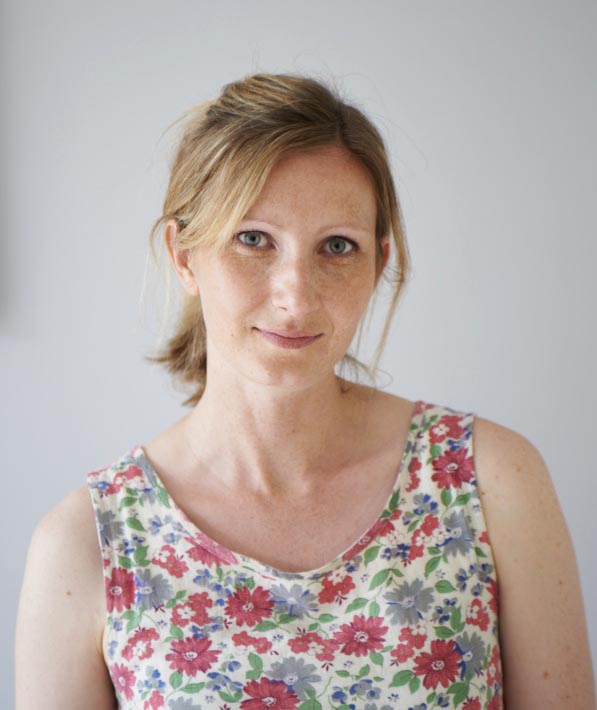
Sophie has been an interior stylist and journalist for over 20 years and has worked for many of the main interior magazines during that time, both in-house and as a freelancer. On the side, as well as being the News Editor for indie magazine, 91, she trained to be a florist in 2019 and launched Flowers Inside My Head where she curates beautiful flowers for modern weddings and events. For Homes & Gardens, she writes features about interior design – and is known for having an eye for a beautiful room.